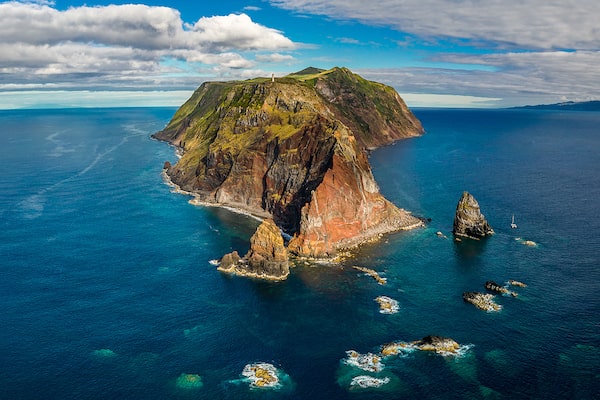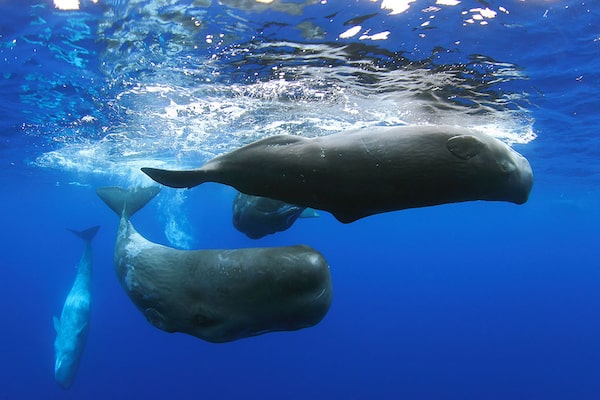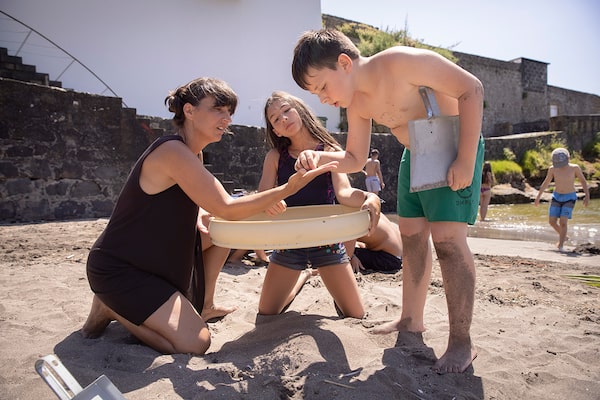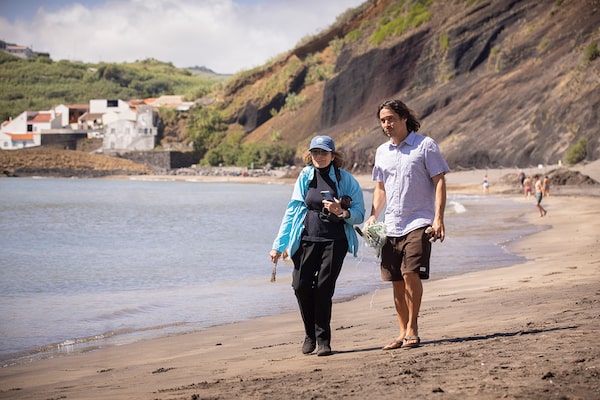Why The Azores is attracting the world’s eco heroes
Home to mobula rays, the Azores is designated as a Hope Spot by Mission Blue, an ocean conservation group that protects marine areas and seeks to maintain the oceans’ ecosystem.
©ROLEX/Greg Lacoeur
The Azores are a chain of rugged volcanic islands in the middle of the North Atlantic whose remoteness is matched by stunning natural beauty. But there’s far more to the region’s biodiversity than meets the eye. Beneath the surface, the islands teem with life, from blue whales to sea sponges, which have relied on these fertile waters to sustain them for millennia.
Like many ocean ecosystems around the world, the biodiversity of the Azores is under pressure from fishing, marine traffic, plastic pollution and a host of other threats. Thanks to the effort of Mission Blue, an ocean conservation non-profit founded by celebrated oceanographer Sylvia Earle, a significant portion of these waters are protected from human interference. Mission Blue raises awareness for these regions by highlighting marine wonders and the people who work to protect them.
Announced as a “Hope Spot” in 2021, the Azores are now one of more than 140 vulnerable waterways around the world to be singled out for further protection by Mission Blue – each with its own local “Champion.”

The Azores Archipelago includes São Jorge Island and increasingly attracts divers and ecotourists seeking whales, dolphins, porpoises and a network of underwater caves.©ROLEX/Greg Lacoeur
“The archipelago of the Azores is a true oasis in the middle of the Atlantic Ocean,” says Christopher Pham, a research associate at the Okeanos research centre of the University of the Azores, specializing in deep-sea ecosystems, and Mission Blue’s Azores Champion.
Due to its unique underwater geography and location, Pham explains, the area functions as essential habitat for a wide variety of marine life, including more than 25 species of whales and dolphins, as well as turtles, seabirds, sharks and rays, and countless species of fish.
Its location, roughly a third of the way between the west coast of Europe and the east coast of North America, offers much of the same benefit to visiting sea creatures as it once did to seafarers like Christopher Columbus. They stop there to feed, breed and rest on their long oceanic journeys,

With pressure from the international community, whale-hunting in the Azores ended in 1984 and today whale-watching is boosting the local economy in a sustainable way.Nuno Sá/Atlantic Ridge Productions
Tourism has always been a major part of the Azores’ economy, but commercial fishing and whaling have also played an important role over the years – a role that Mission Blue hopes to reduce by helping the region establish itself as an eco-tourism destination. Thanks to these new protections, the Azores is in a unique position to draw even more nature-seeking tourists and create more tourism jobs while celebrating the Monteiro’s storm petrels that nest in burrows among the black volcanic rocks and the sperm whales that come here to breed.
“The Azores Archipelago is especially renowned for the observation of cetaceans,” Pham says. “Recently the Azores have also emerged as a diving destination [to observe] species like tuna, manta rays and turtles, as well as underwater caves.”

Mission Blue encourages children to appreciate their surroundings and here, children in the Azores discover the negative impact of microplastics on the ocean and marine life.©ROLEX/Reto Albertalli
Along with the Hope Spot designation, the Regional Government of the Azores announced the Blue Azores program in 2019, an initiative that aims to designate 15 per cent of the one million square kilometres of ocean surrounding the Azores as new no-take marine reserves. This means no extraction of any kind – from sport fishing to commercial trawling – and represents a big step forward for Mission Blue’s work in the area.
With some 17 per cent of the sea turtles, sharks, fish and marine mammals that inhabit these waters classified as critically endangered, endangered or vulnerable by the International Union for the Conservation of Nature (IUCN), it also offers new hope for species such as blue whales, leatherback sea turtles and bluefin tuna.

Mission Blue founder Sylvia Earle is on a path to protect 30 per cent of the oceans by 2030 and local Hope Spot champion Christopher Pham is actively involved in the Azores.©ROLEX/Reto Albertalli
Joining Mission Blue and the broader scientific community in its goal to increase global marine protection to 30 per cent by 2030 is Rolex, whose Perpetual Planet initiative supports scientists like Earle and Pham in their quest to meet the world’s most urgent environmental challenges and restore balance to our ecosystems. Rolex’s active support and global platform has played an important role in promoting Mission Blue’s conservation goals by helping spread awareness of the importance of Hope Spots like the Azores archipelago for marine biodiversity and the health of the planet.
“Launching the Azores as a Hope Spot is so logical – just ask the whales,” says Earle, who has been working to protect the world’s oceans since the 1960s. “This used to be a place where whales were killed and now people are making a living by respecting the whales and having people come out and visit them as fellow citizens of the planet.”
Advertising feature produced by Globe Content Studio with Rolex. The Globe’s editorial department was not involved.